#mabon
Text
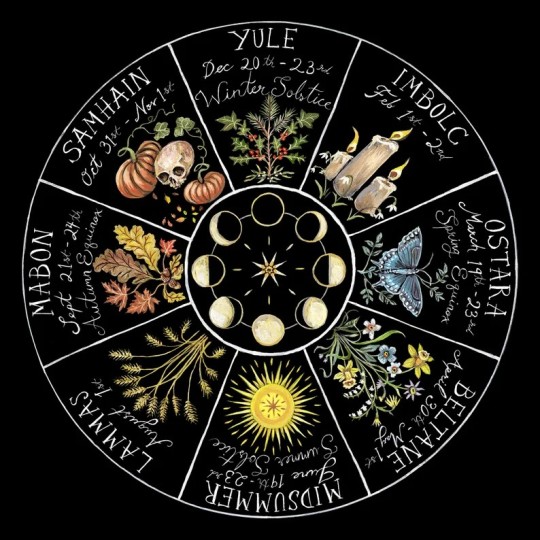
Source
#wheel of the year#etsy#print#yule#imbolc#ostara#beltane#midsommar#midsummer#lammas#mabon#samhain#pagan witch#pagan#paganism#paganblr#witch
5K notes
·
View notes
Text


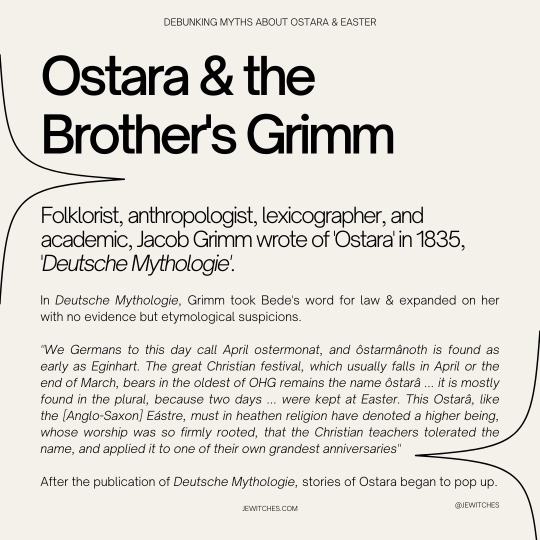


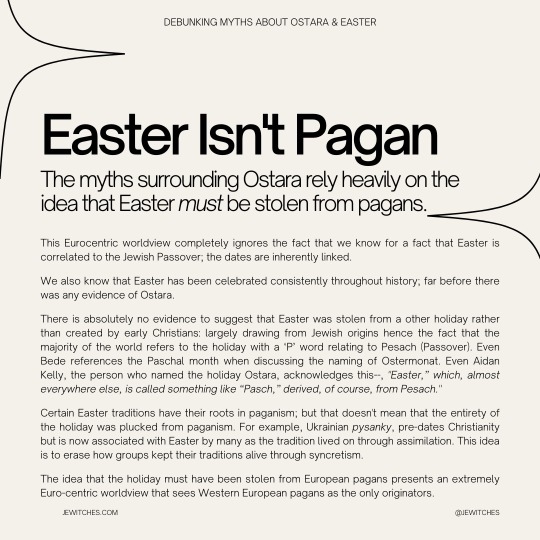

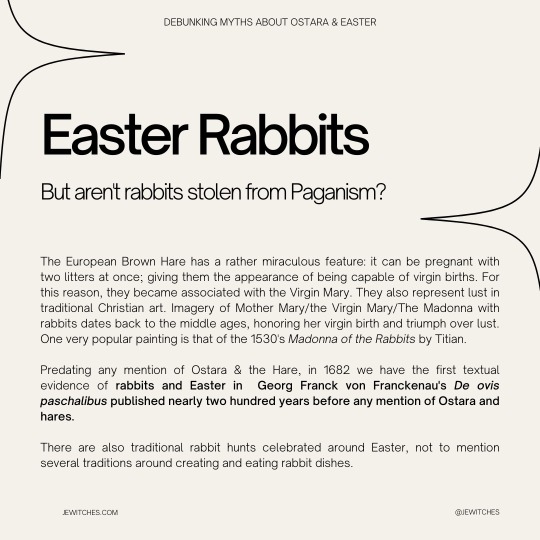

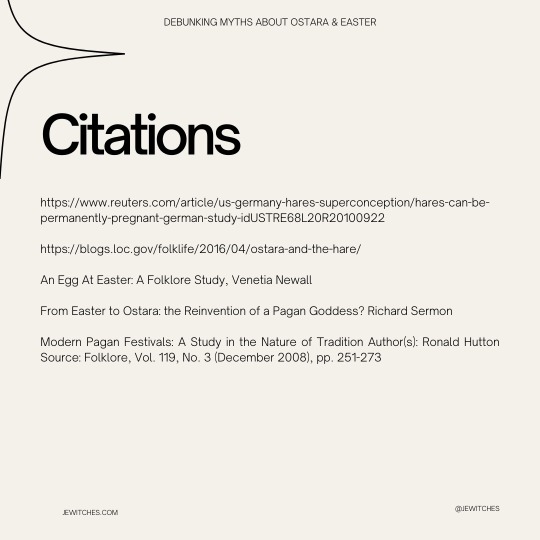
Every single year, without fail, we deal with the fact that the internet is obsessed with promoting the misinformation that Ostara must have been stolen from Easter.
People will argue until they’re blue in the face…But they won’t provide citations or evidence to the contrary and the reason why is simple: there isn’t any.
If you find that celebrating Ostara brings you joy: we aren’t here to rain on your parade or stop you in the slightest.
But misinformation, even misinformation that sounds cool and serves to further rhetorical goals, is still wrong and harmful.
So, after years of promising it, we’ve finally delivered: Easter isn’t stolen from Ostara.
Have questions? We’re happy to answer!
Make sure to follow our Instagram @jewitches for the ongoing discussion!
#jewish#jewitches#judaism#jewitch#witchcraft#magic#witchblr#witchy#witches#Wicca#wiccan#Ostara#Eostre#mabon#Easter
5K notes
·
View notes
Text
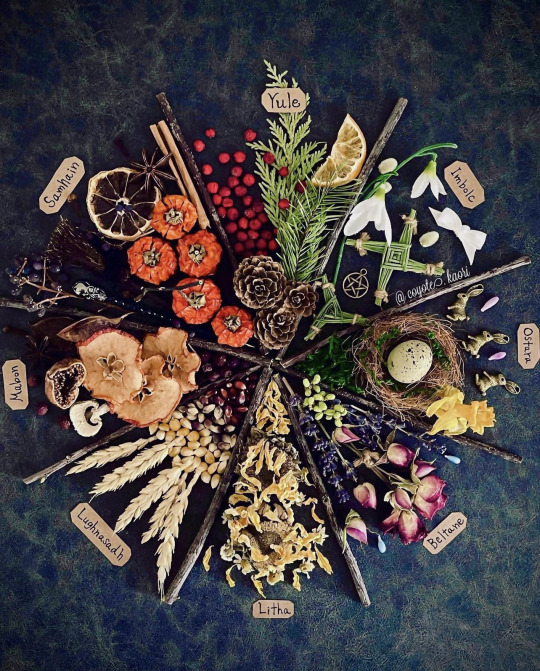
📷 Coyote.kaori
#wheel of the year#Samhain#mabon#imbolc#Ostara#Yule#litha#lammas#lughnassadh#beltaine#witchblr#witches of tumblr#witchcraft#wicca#pagan#witchy things#witchy#magick#green witch#baby witch#kitchen witch#witch altar#wiccan altar
2K notes
·
View notes
Text
Pagans who collect rocks they find on the ground.
Pagans who buy crystals because it makes them happy.
Pagans who have to declutter a space every time they want to make an altar.
Pagans who lose track of time sitting in front of their carefully crafted altar.
Pagans who live in the northern hemisphere trying to sort through mainstream holidays to find what’s left of theirs.
Pagans who live in the southern hemisphere and struggle to celebrate seasonal holidays and feel out of synch with their community they do.
Pagans who talk to the moon about their day.
Pagans who look into the eyes of their loved ones and find traces of divinity.
Pagans who revel in the freedom of their practice.
Pagans who worry if they’re doing something wrong.
Pagans (I love y’all so much and I’m grateful for every one of you)
Have a wonderful equinox to those still celebrating it! Blessed Be
#hellenic pagan#gay pagan#paganism#paganblr#pagan#pagan witch#norse paganism#baby pagan#spring equinox#autumn equinox#i love you#ostara#mabon
582 notes
·
View notes
Text

Ig: alexandraadavies1996
#hippie#wicca#bohemian#witch#boho#trans girl#trans woman#transgender#trans#mtf trans#hippie fashion#hippie aesthetic#mabon#autumnal#autumn
725 notes
·
View notes
Text

Mabon Altar Ideas & Correspondences
Mabon, also known as the Autumn Equinox, marks the midpoint between the summer and winter solstices. It's a time to celebrate the abundance of the harvest season and express gratitude for the blessings of the year. One way to honor this occasion is by setting up a Mabon altar, adorned with items and symbols that resonate with the energy of the season. Here are a few ideas for when you’re putting your altar together.
The Altar Cloth: Choose an altar cloth in rich autumnal colors such as deep red, orange, or brown. These colors represent the changing leaves and the bountiful harvest.
Seasonal Fruits and Vegetables: Incorporate apples, pumpkins, squash, and corn, or any local harvests you have in your area. These are traditional symbols of the harvest and abundance during Mabon.
Candles: Use candles in colors associated with Mabon, such as gold, yellow, orange, or deep red. These represent the changing colors of the land. Alternatively, you could use black and white candles to represent the balance of dark and light on the equinox.
Crystals: Consider placing crystals like citrine, amethyst, or jasper on your altar. These stones resonate with the energies of balance, gratitude, and abundance.
Symbols of Balance: Include items that represent the balance of day and night, such as a yin-yang symbol or two candles, one for the sun and one for the moon.
Leaves and Acorns: Collect fallen leaves and acorns to symbolize the changing season and the promise of new growth in the future.
Chalice and Bread: A chalice filled with wine or cider and a loaf of bread represent the traditional elements of water and earth, symbolizing the harvest's bounty.
Deity Representations: If you work with specific deities in your practice, add representations of them to your altar. Some gods and goddesses associated with Mabon include Demeter, Persephone, and the Green Man.
Mabon Correspondences
Colors: Deep red, orange, yellow, brown, and gold.
Herbs: Sage, marigold, hops, and thistle.
Foods: Apples, grapes, nuts, grains, and root vegetables.
Symbols: Scales, cornucopias, and the autumn wreath.
Activities: Apple picking, making wreaths, offering prayers of gratitude, and sharing a feast with loved ones.
Intentions: Reflect on balance in your life, give thanks for your blessings, and set intentions for the darker months ahead.
May you be blessed with abundance and gratitude.
#mabon#mabon altar#pagan#paganism#witch#wicca#neopagan#witchcraft#occult#magick#wiccan#autumn#autumnal equinox#autumn equinox#fall equinox#witches of tumblr#witchblr
800 notes
·
View notes
Text
September 2023 witch guide
September 2023 witch guide
Full moon: September 29th
New moon: September 14th
Sabbats: Mabon September 23rd
September Harvest Moon
Also known as: Autumn moon, falling leaves moon, song moon, leaves turning moon, moon of brown leaves, yellow leaf moon, wine moon & Full corn moon
Element: Earth
Zodiac: Virgon& Libra
Animal spirits: Trooping Faeries
Deities: Brigid, Ceres, Ch'ang-o, Demeter, Freya, Isis & Vesta
Animals: Jackal & snake
Birds: Ibis & sparrow
Trees: Bay, hawthorn, hazel & larch
Herbs/plants: Copal, fennel, rye, skullcap, valerian, wheat & witch hazel
Flowers: Lily & Narcissus
Scents: Bergamot, gardenia, mastic & storax
Stones: Bloodstone, chrysolite, citrine, olivine, peridot & sapphire
Colors: Browns, dark blue, greens & yellows ( Earth tones)
Energy: Balance of light & dark, dietary matters, employment, health, intellectual pursuits, prosperity, psychism, rest, spirituality, success & work environments. Also cleaning & straightening mentally, physically & spiritually.
Technically, the Harvest Moon is the Full Moon closest to the September equinox around September 21st. The Harvest Moon is the only Full Moon name determined by the equinox rather than a month. Most years, it’s in September, but around every three years, it falls in October.
In September, the Full Moon is the Corn Moon from the Native American tribes harvesting their corn. It can also be the Harvest Moon, which corresponds with the Anglo-Saxon name, while Celtic and Old English names are Wine Moon, Song Moon, and Barley Moon.
Mabon
Also known as: Autumn Equinox, Cornucopia, Witch's Thanksgiving & Alban Elved
Season: Fall
Symbols: Acorns, apples, autumn leaves, berries, corn, cornucopia (horn of plenty), dried seeds, gourds, grains, grapes, ivy, pine cones, pomegranates, vines, wheat, white roses & wine
Colors: Blue brown, drk red, deep gold, gold, indigo, lead green, maroon, orange, red, russet, violet & yellow
Oils/incense: Apple, apple blossom, benzoin, black pepper, hay/straw, myrrh, passion flower, patchouli, pine, red poppy & sage
Animals: Dog, goose, hawk, swan, swallow & wolf
Stones: Agate, amethyst, carnelian, lapis lazuli, sapphire, yellow Agate & yellow topaz
Foods: Apples, blackberries, blackberry wine, bread, carrots, cider, corn, cornbread, grapes, heather wine, nuts, onions, pomegranates, potatoes, squash, vegetables, wheat & winw
Herbs/plants: Acorn, benzoin, cedar, corn, cypress, ferns, grains, hazel, hops, ivy, myrrh, oak, pine, sage, sassafras, Salomon's seal, thistle, tobacco & wheat
Flowers: Aster, heather, honeysuckle, marigold, milkweed, mum,passion flower& rose
Goddesses: Danu, Epona, Modron, Morrigan, Muses, Pomona, Persephone, Sophia & Sura
Gods: Esus, Green Man, Hermes, Mabon, Mannanan, Toth & Thor
Issues, Intentions & Powers: Accomplishment, agriculture, balance, goals, gratitude & grounding
Spellworks: Balance, harmony, protection, prosperity, security & self confidence
Related festivals:
• Sukkot- is a Torah-commanded holiday celebrated for seven days, beginning on the 15th day of the month of Tishrei. It is one of the Three Pilgrimage Festivals (Hebrew: שלוש רגלים, shalosh regalim) on which those Israelites who could were commanded to make a pilgrimage to the Temple in Jerusalem. In addition to its harvest roots, the holiday also holds spiritual importance with regard to its abandonment of materialism to focus on nationhood, spirituality, and hospitality, this principle underlying the construction of a temporary, almost nomadic, structure of a sukkah.
• Mid-Autumn festival- also known as the Moon Festival or Mooncake Festival, is a traditional festival celebrated in Chinese culture. Similar holidays are celebrated by other cultures in East & Southeast Asia. It is one of the most important holidays in Chinese culture; its popularity is on par with that of Chinese New Year. The history of the Mid-Autumn Festival dates back over 3,000 years. The festival is held on the 15th day of the 8th month of the Chinese lunisolar lunisolar calendar with a full moon at night, corresponding to mid-September to early October of the Gregorian calendar. On this day, the Chinese believe that the Moon is at its brightest and fullest size, coinciding with harvest time in the middle of Autumn.
• Thanksgiving- This is a secular holiday which is similar to the cell of Mabon; A day to give thanks for the food & blessings of the previous year. The American Thanksgiving is the last Thursday of November while the Canadian Thanksgiving is celebrated in October
• Festival of Dionysus- There were several festivals that honored Dionysus, the God of wine. It was a time of fun, games, feasting & drinking wine.
Activities:
•Scatter offerings in a harvested fields, Offer libations to trees
• Decorate your home and/or altar space for fall
• Bake bread
• Perform a ritual to restore balance and harmony to your life
• Cleanse your home of negative energies
• Pick apples
• Have a dinner or feast with your family and/or friends
• Set intentions for the upcoming year
• Purge what is no longer serving you
•Take a walk in the woods
• Enjoy a pumpkin spice latte
• Donate to your local food bank
• Gather dried herbs, plants, seeds & pods
• Learn something new
• Make wine
• Brew an apple cinnamon simmer pot
• Create an outdoor Mabon altar
•Adorn burial sites with leaves, acorns, & pinecones to honor those who have passed over & visit their graves
Many cultures see the second harvest (after the first harvest Lammas) and equinox as a time for giving thanks. This time of year is when farmers know how well their summer crops did, and how well fed their animals have become. This determines whether you and your family would have enough food for the winter. That is why people used to give thanks around this time, thanks for their crops, and animals, and food.
The name Mabon comes from the Welsh God, who was the son of the Earth Mother Goddess. However, there is evidence that the name was adopted in the 1970s, and the holiday was not originally a Celtic celebration.
Some believe Night and day are of equal legth and the God's energy & strength are nearly gone . The Goddess begins to mourn the loss she knows is coming, but knows he will return when he reborn at Yule.
Sources:
Farmersalmanac .com
Wikipedia
Llewellyn's Complete Book of Correspondences by Sandra Kines
A Witch's Book of Correspondences by Viktorija Briggs
Mabon: Rituals, Recipes & Lore for the Autumn Equinox Llewellyn's Sabbat Essentials
#witchcraft#wheel of the year#sabbat#mabon#Corn moon#Harvest moon#witchblr#wiccablr#paganblr#pagan#Wicca#grimoire#spellbook#book of shadows#witches of tumblr#tumblr witch#moon magic#witch tips#witch guide#traditional witchcraft#witch community#witch society#witchy things#witches#witch friends#greenwitchcrafts#All witches#correspondence#witchyvibes#witchcore
706 notes
·
View notes
Photo

Blessed Mabon by IrenHorrors
This artist on Instagram
#art#illustration#digital art#fall#autumn#deer#witch#pagan#paganism#wheel of the year#mabon#autumn equinox#trees#forest
4K notes
·
View notes
Photo

made a new reference sheet for one of my characters and i like how it came out
#my art#digital art#my ocs#mabon#character design#huldra#i might change her sleeves to open ones like they used to be but i don't know
1K notes
·
View notes
Text

Mabon, Alban Alfred, Equinox (2023)
Happy Turning of the Year, Everyone!
#mabon#the wheel of the year#alban elfed#the pagan series#autumn#fall equinox#equinox#autumnal equinox
485 notes
·
View notes
Photo
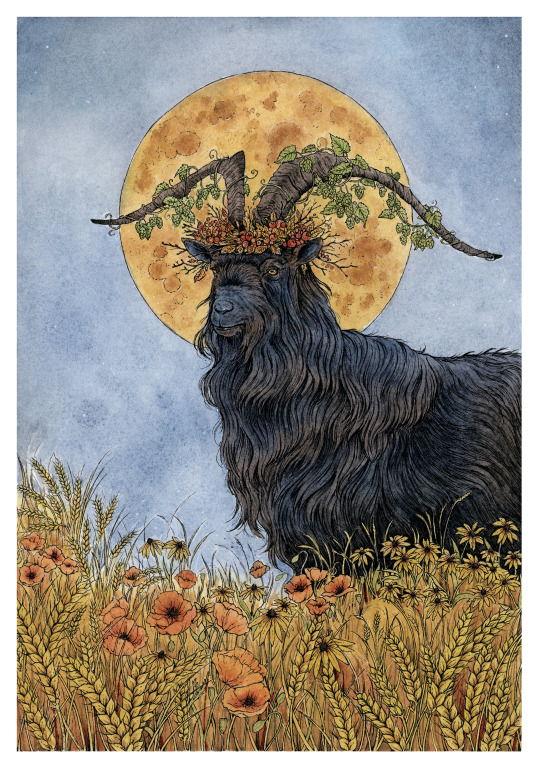
I’m so ready for the spooky season, you don’t even know 🎃
Etsy
Instagram
5K notes
·
View notes
Text

📷quiet.coven
#mabon#blessed mabon#mabon altar#mabon sabbat#mabon 2023#pentacle#witchblr#witches of tumblr#witchcraft#wicca#pagan#witchy#witchy things#magick#wicca altar#witch's altar#pagan altar#witch altar#witches altar#altar setup#altar decor#autumn equinox#fall equinox#fall witch
1K notes
·
View notes
Text

Merry Mabon 🍂🔮Lacemade dress dyed by me, hair clips by me, belt thrifted, bat necklace by Omnia Studios, vampire earrings by The Deadly Stake, boots Fluevog.
#ootd#whimsigoth#mabon#flower hair clips#Lacemade#fluevog#the deadly stake#fairy fashion#Omnia studios
334 notes
·
View notes
Text


It’s the Autumnal Equinox (here in the Northern Hemisphere)! 🍂 Here’s the Mabon chapter opener from The Wheel of the Year by Fiona Cook and published by Andrews McMeel, which will be out in just about a month on October 24th. Preorder wherever you like to get your books!
#illustration#artists on tumblr#wheel of the year#Mabon#autumn#autumnal equinox#jessica roux#jessicaroux#nature#books
400 notes
·
View notes
Text
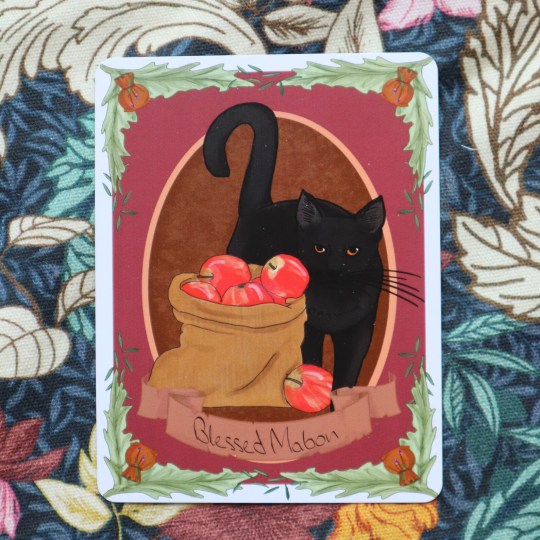


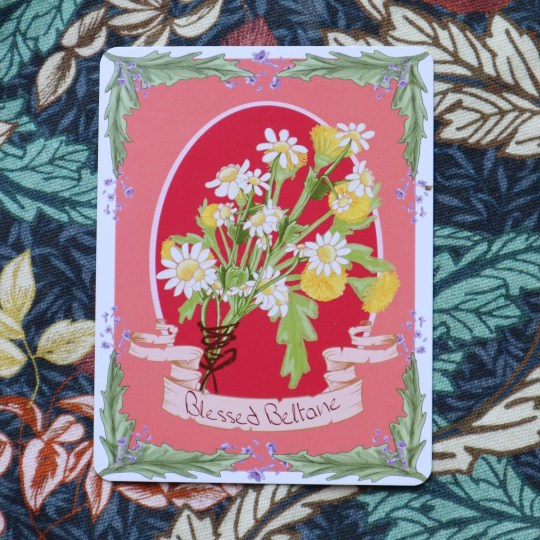


Wheel of the Year Art Prints by ofcraftsandcurios
Mabon // Lughnasadh // Litha // Beltane // Ostara // Imbolc
#art#art print#wheel of the year#pagan#pagan holidays#mabon#lughnasadh#litha#beltane#ostara#imbolc#samhain#yule#witchy#witchcraft#witchy art#drawing#illustration
166 notes
·
View notes
Text
Sabbats Masterpost
The History of Samhain
Samhain Facts
Samhain Correspondences
Samhain Crystals
Samhain Colors
Samhain Plants
Samhain Incense & Oils
Samhain Animals
Samhain Foods
Samhain Ritual & Magick
Samhain Deities
Samhain Altar Ideas
Samhain Activities
Last Minute Samhain Ideas
----------------------------------------
The History of Mabon
Mabon Facts
Mabon Correspondences
Mabon Crystals
Mabon Colors
Mabon Plants
Mabon Oils & Incense
Mabon Animals
Mabon Foods
Mabon Ritual & Magick
Mabon Deities
Mabon Altar
Mabon Activities
Last Minute Mabon Ideas
-----------------------------------
Lughnasadh/Lammas History
Lughnasadh/Lammas Facts
Lughnasadh/Lammas Correspondences
Lughnasadh/Lammas Crystals
Lughnasadh/Lammas Colors
Lughnasadh/Lammas Plants
Lughnasadh/Lammas Incense & Oils
Lughnasadh/Lammas Animals
Lughnasadh/Lammas Food
Lughnasadh/Lammas Ritual & Magick
Lughnasadh & Lammas Deities
Lughnasadh & Lammas Altar Ideas
Lughnasadh & Lammas Activities
Last minute Lammas Ideas
----------------------------------------
Litha History
Litha Facts
Litha Correspondences
Litha Crystals
Litha Incense & Oils
Litha Colors
Litha Plants
Litha Animals
Litha Foods
Litha Deities
Litha Altar Ideas
Litha Ritual & Magick
Litha Activities
Last Minute Litha Ideas
-----------------------------------------
The History of Beltane
Beltane Facts
Beltane Correspondences
Beltane Incense & Oils
Beltane Colors
Beltane Crystals
Beltane Plants
Beltane Animals
Beltane Altar
Beltane Food
Beltane Deities
Beltane Ritual & Magick
Beltane Activities
Last Minute Beltane Ideas
----------------------------------
Ostara History
Ostara Facts
Ostara Correspondences
Ostara Colors
Ostara Crystals
Ostara Incense & Oils
Ostara Plants
Ostara Animals
Ostara Food
Ostara Altar Ideas
Ostara Ritual & Magick
Ostara Deities
Ostara Activities
Last Minute Ostara Ideas
-----------------------------
The History of Imbolc
Imbolc Facts
Imbolc Correspondenses
Imbolc Colors
Imbolc Crystals
Imbolc Incense & Oils
Imbolc Plants
Imbolc Animals
Imbolc Food
Imbolc Altar
Imbolc Ritual & Magick
Imbolc Deities
Imbolc Activities
Last Minute Imbolc Ideas
--------------------------------------
The History of Yule
Yule Facts
Yule Correspondences
Yule Crystals
Yule Colors
Yule Plants
Yule Incense & Oils
Yule Animals
Yule Foods
Yule Ritual & Magick
Yule Deities
Yule Altar
Yule Activities
Last Minute Yule Ideas
#sabbat#esbat#samhain#mabon#lammas#lughnasadh#wicca#witch#pagan#heathen#shaman#beginner witch#litha#beltane#yuichiro matsumoto#ostara#imbolc
3K notes
·
View notes